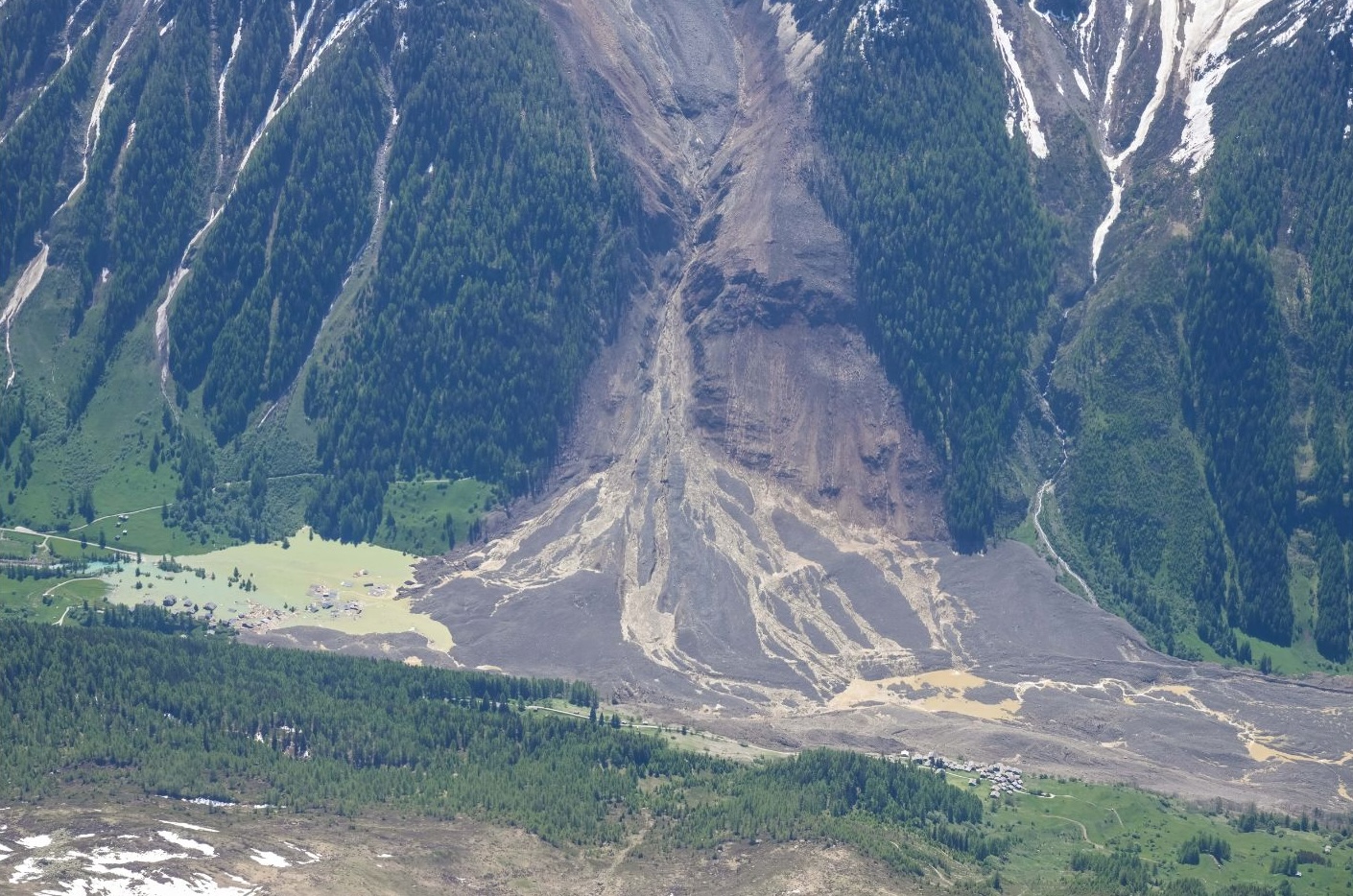Our News
Blatten Glacier Collapse: A Reminder to Preserve Our Vulnerable Communities

Image credit: Federal Office of Topography swisstopo.
A loud cracking sound followed by an immense landslide, causing a valley filling plume of smoke. For most this imagery alone is enough to send shivers down their spine. Though, for some, this imagery elicits much more devastating emotion.
This is the reality for the residents of Blatten, Switzerland who recently lost their town after a glacier collapsed onto it.
This was especially difficult news for me as a dual British Swiss citizen. For years I have lived up and across the valley from Blatten, looking down into the valley thinking of the relative safety below. Being avid skiers, my friends and I have always been programmed to look upward for signs of danger, identifying safety spots below. Never did we think that in the valley below would Switzerland experience one of its worst disasters in decades.
Fortunately, most of the town’s population and livestock were evacuated before the collapse. Although, one person is still missing after extensive searches around the site.
For those evacuated, the story is much brighter than that of similar situations in the Russian Caucuses or in Italy. Although it is important to not overlook the psychological stress of being uprooted from one’s home. An eviction event like the one in Blatten can prompt the erosion of community and belonging that so many people take for granted.
One instance where Valaisan/Wallisan communities thrive is carnival. Blatten specifically is known for elaborate and traditional Tschäggättä carnival costumes. I recall these carnival celebrations well because of the effort people would put into making their costume and the smiles the parades brought to people’s faces. In Switzerland each town celebrates differently because of the unique melange of tradition, people, and ancestry which define what you wear. For residents of Blatten, the next carnival, likely surrounded by slightly different traditions, will be a reminder of how climate change can challenge one’s identity by forcing them from where they live.
The threat posed to communities is not new. People have been forced to relocate, disconnecting their relationship to the land of their ancestors, for as long as historical records have existed. Although, the example of Blatten shows a growing trend of climate change induced displacement.
Climate change induced displacement
The IEP estimates that there could be as many as 1.2 billion climate refugees by 2050.
This is a cause for alarm on many fronts.
Importantly, the focus shouldn’t quickly shift from the fact that as many as 1.2 billion people will be displaced by climate change. Buildings will be destroyed, traditions will cease to exist, languages will be lost, and identities will be challenged.
In 2022 the number of climate refugees was 32.6 million. If the IEP prediction is correct the 2022 figure will multiply 37 times in 27 years. As anti-migrant rhetoric grows globally, fears as to how migrants will be received multiply.
Whilst climate refugees might be blamed, the reality is that they have done very little to induce their displacement. A climate readiness index shows that the 80 countries most at risk to climate change are from the global south. These nations are also often the least responsible for historic and current emission contributions.
These statistics support the argument for greater climate justice – a concept which recognises significant imbalances between responsibility and vulnerability when analysing climate change, and the fair investment needed for global adaptation and mitigation.
Caroline Davies humanises climate injustice through her reporting of the risk posed by deteriorating glaciers in Pakistan’s Himalayan region. She shares the stories of Kamal and Sultan Ali in a podcast, as they recount the pain and suffering they experienced when their village was flooded after a glacial lake burst its banks. This type of story is becoming more common in Gilgit-Bltistan, Pakistan, and there are few safe common lands for people to move to. In the rural, resource-poor, town residents are having to decide whether to rebuild their houses again or use the little wealth they have to move away from where they have always called home.
2025 the year of glaciers’ preservation
Blatten, Kamal, and Sultan Ali’s stories reinvigorate support for 2025 as the year of glaciers’ preservation. This joint campaign from UNESCO and the World Meteorological Organisation looks to raise awareness for the critical role of glaciers. Among many, a key message is that we need to protect these life-supporting, yet potentially life destroying, ice rivers.
Glacial meltwater provides water resources for 1.9 billion people, but under current climate policies “more than three quarters of the world’s glacial mass could disappear by the end of this century”.
The time for action is now.
Educating oneself is a vital first step, and one that can be easily undertaken with our partners at Protect Our Winters UK. They run Carbon Literacy courses with a specific focus on how climate change is changing the outdoor and winter world around us. The course is fantastic at looking beyond the surface and drawing connections to the effects on surrounding communities. You can find their upcoming courses here.
Additionally, Protect Our Winters EU have produced the short film ‘Downstream’. It draws attention to glaciers and the impact their deterioration has on communities downstream. They screened the film at the European Parliament followed by a panel with MEPs and Olympic medallists. To watch the film or screen it locally to your community you can find it here.
Finally, you can get involved directly in the International Year of Glacier Prevention campaign, through a variety of actions that individuals can undertake.